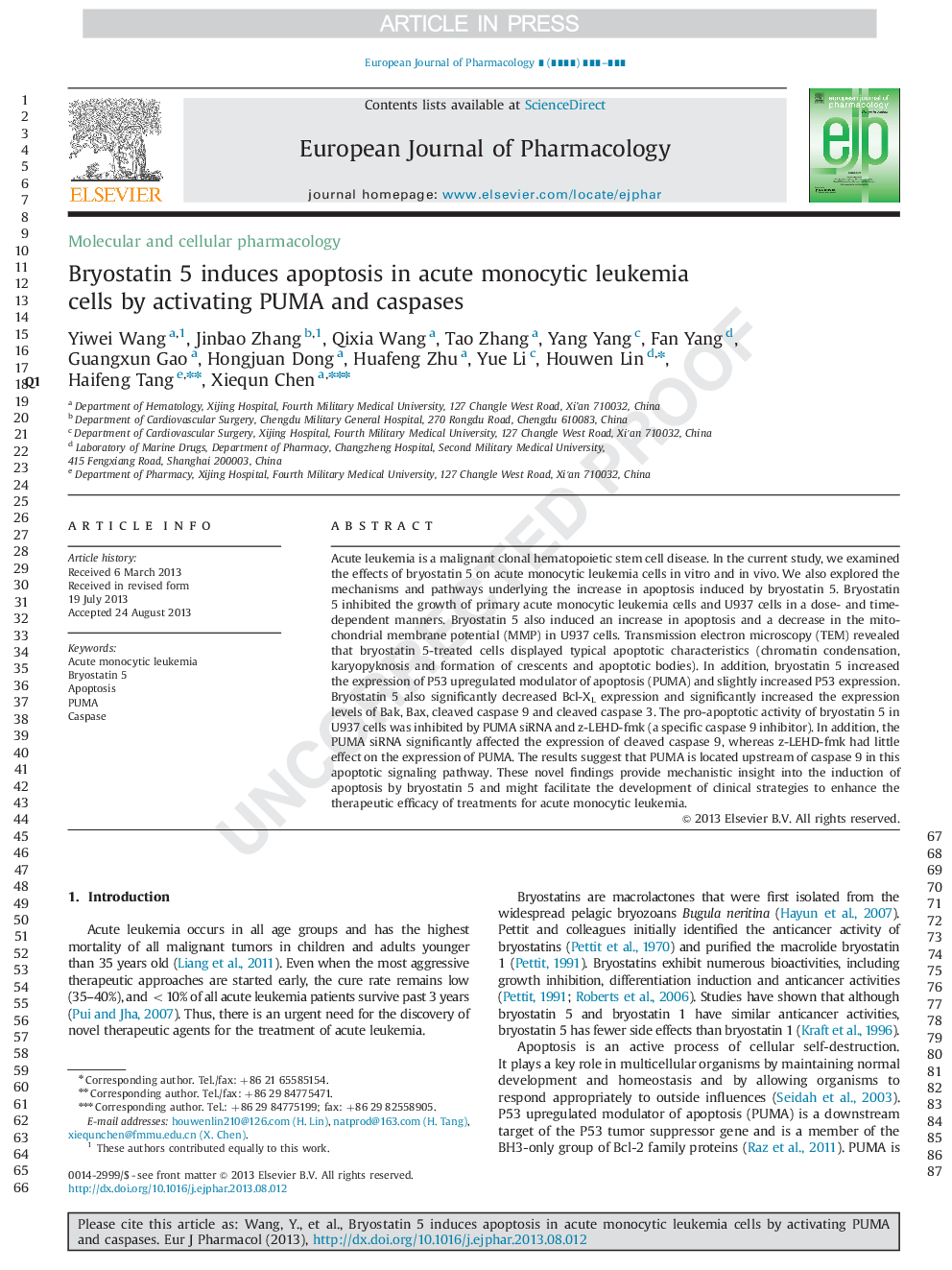| Article ID | Journal | Published Year | Pages | File Type |
|---|---|---|---|---|
| 5828357 | European Journal of Pharmacology | 2013 | 10 Pages |
Abstract
Acute leukemia is a malignant clonal hematopoietic stem cell disease. In the current study, we examined the effects of bryostatin 5 on acute monocytic leukemia cells in vitro and in vivo. We also explored the mechanisms and pathways underlying the increase in apoptosis induced by bryostatin 5. Bryostatin 5 inhibited the growth of primary acute monocytic leukemia cells and U937 cells in a dose- and time-dependent manners. Bryostatin 5 also induced an increase in apoptosis and a decrease in the mitochondrial membrane potential (MMP) in U937 cells. Transmission electron microscopy (TEM) revealed that bryostatin 5-treated cells displayed typical apoptotic characteristics (chromatin condensation, karyopyknosis and formation of crescents and apoptotic bodies). In addition, bryostatin 5 increased the expression of P53 upregulated modulator of apoptosis (PUMA) and slightly increased P53 expression. Bryostatin 5 also significantly decreased Bcl-XL expression and significantly increased the expression levels of Bak, Bax, cleaved caspase 9 and cleaved caspase 3. The pro-apoptotic activity of bryostatin 5 in U937 cells was inhibited by PUMA siRNA and z-LEHD-fmk (a specific caspase 9 inhibitor). In addition, the PUMA siRNA significantly affected the expression of cleaved caspase 9, whereas z-LEHD-fmk had little effect on the expression of PUMA. The results suggest that PUMA is located upstream of caspase 9 in this apoptotic signaling pathway. These novel findings provide mechanistic insight into the induction of apoptosis by bryostatin 5 and might facilitate the development of clinical strategies to enhance the therapeutic efficacy of treatments for acute monocytic leukemia.
Related Topics
Life Sciences
Neuroscience
Cellular and Molecular Neuroscience
Authors
Yiwei Wang, Jinbao Zhang, Qixia Wang, Tao Zhang, Yang Yang, Yanghua Yi, Guangxun Gao, Hongjuan Dong, Huafeng Zhu, Yue Li, Houwen Lin, Haifeng Tang, Xiequn Chen,
